The introduction of the Porsche 991 GT3 arrived in 2014, replacing the 997.2 GT3 on the brand new 991 chassis.
Known for its superb performance and Porsche’s legendary reliability, the 991 GT3 quickly became the benchmark for all high-performance sports cars.

The GT3 is designed as an entry-level GT, positioned below its more potent sibling, the GT3 RS. While it’s built with a focus on the driver and track performance, it doesn’t compromise on the ability to deliver comfortable road trips.
Unlike its RS counterpart, it isn’t a hardcore track-only machine.
The 991.1 GT3 comes with a 3.8-liter engine that cranks out 475 hp, a step down from the 4.0 liter, 500 hp beast in the GT3 RS. The engine has a quick rev, owing to its lightweight internals.

A signature central titanium exhaust system contributes to its audibly pleasing growl, particularly near its lofty 9000-rpm redline.
Only the PDK transmission was provided for the 991 GT3. However, in response to customer feedback, Porsche adjusted its approach.
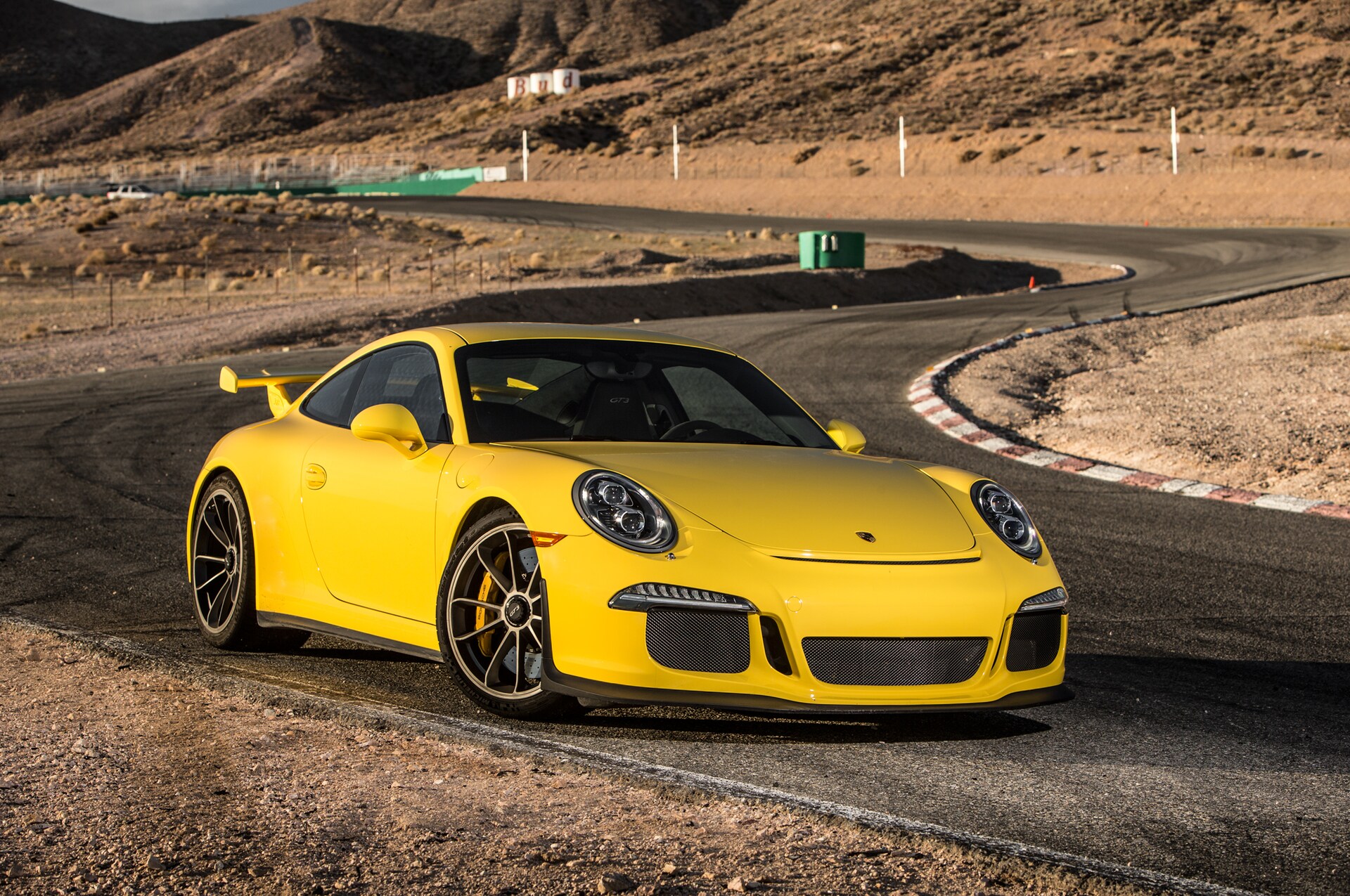
Photo by Motor Trend
With the introduction of the refreshed 991.2 GT3, they expanded the transmission options to include both the PDK and a new 6-speed manual. The manual version was roughly 37 lbs lighter than the PDK model.
But when it came to the 0-62 mph dash, the PDK’s speedy gear changes and 15 percent shorter ratios resulted in up to a half-second lead over the manual. It could complete the run in as little as 3.3 seconds, outdoing the manual’s 3.8 seconds.
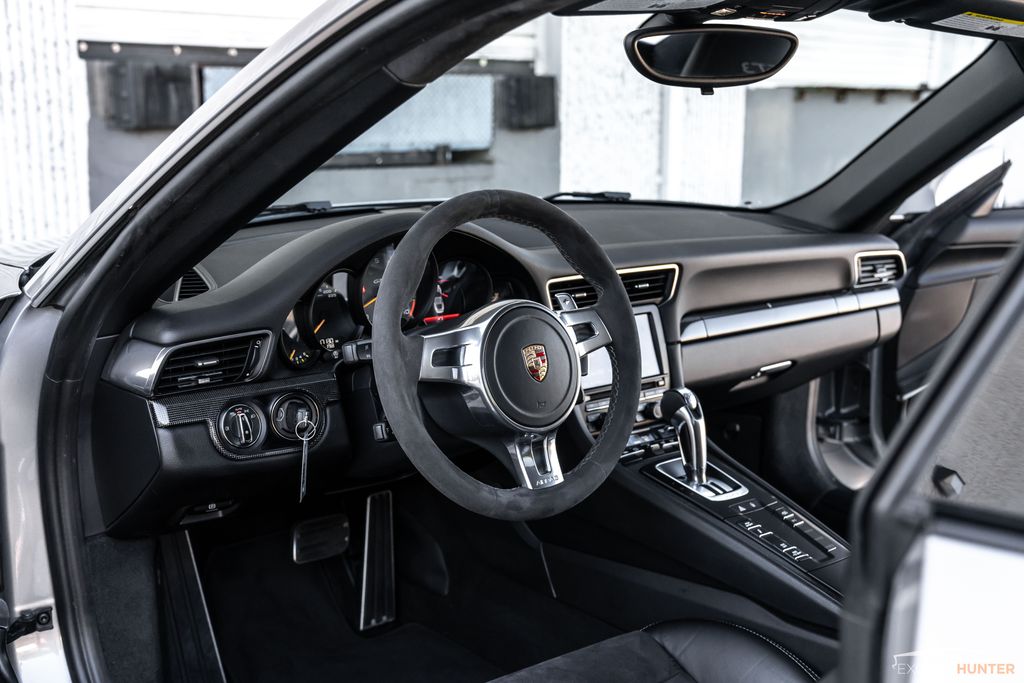
With a bodyshell similar to the 911 Carrera S, the initial 991 GT3 did sit 25mm lower. Although it was 118mm longer and 44mm wider than its 997.2 predecessor, drivers didn’t appear to notice the size difference from the inside; the car still felt compact and agile.
With a new front bumper, updated door mirrors, and ducts at both the front and the wing in the rear, the GT3 really stood out.
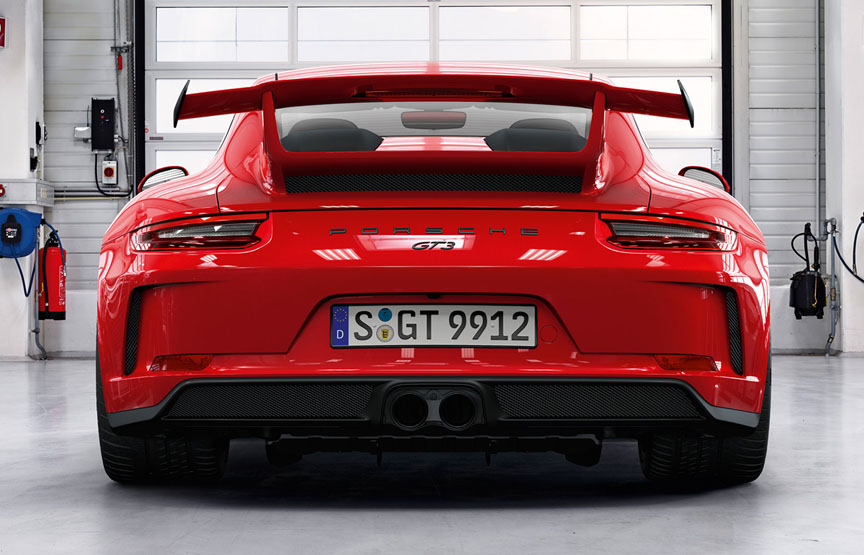
Photo by Stutt Cars
In the GT3, the most desirable feature you’ll find inside is the carbon fiber racing seats, a high-end touch borrowed from the Porsche 918 hypercar. Although some models opted for comfort seats, the racing ones were the real draw. This model’s interior also stands out with its Alcantara steering wheel, despite sharing the same dashboard layout as all other 991 911s.
Once you’re behind the wheel of the 991 GT3, you’ll immediately feel its unique character, and how it stands out from the other non-GT 911’s. With the responsive steering the car corners with pure confidence.
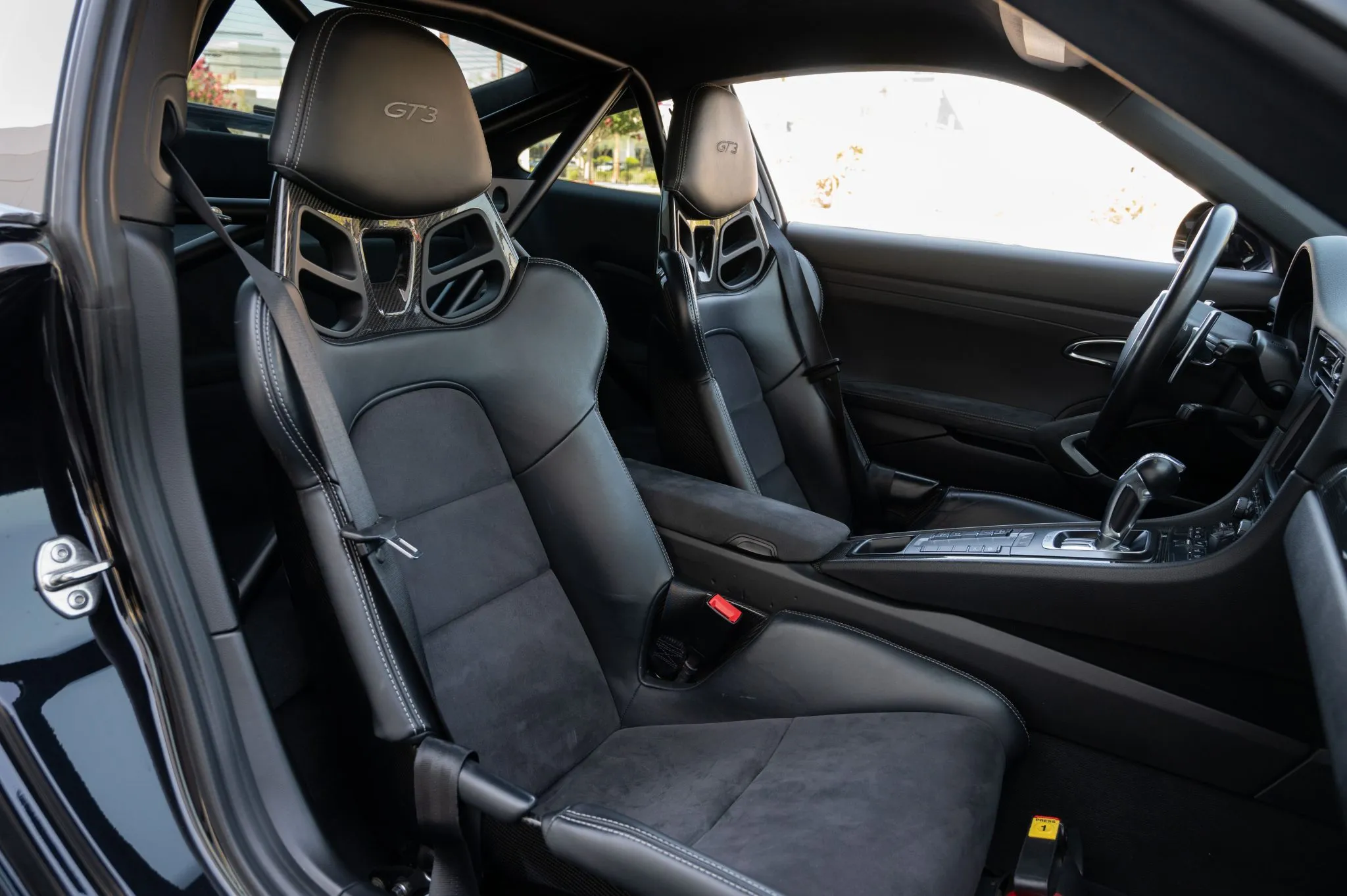
Photo by Bring a Trailer
There’s a rawness to the ride that’s unmistakable, a nod to the GT3’s track heritage, yet it doesn’t feel out of place on a regular road trip.
The engine’s sound is a symphony, getting louder and more intense as you rev up to the high 9000-rpm redline. It’s not just about the noise, though; the 3.8-liter engine provides a steady surge of power, making the car feel lively and quick.
The transmission is another highlight. If you’re driving the PDK version, you’ll appreciate the quick shifts and the intelligent mode that seems to always choose the right gear. For the purists who prefer a manual, the 991.2 GT3’s 6-speed gearbox is a joy to use.

Photo by Elferspot
All of this performance doesn’t come at the expense of comfort. The 991 GT3 is surprisingly practical for a high-performance sports car, with a reasonably compliant ride and enough creature comforts to make long journeys enjoyable. From the driver’s seat, the car doesn’t feel as wide or as long as it is, making it feel compact and nimble.
Among the rivals to the 991 GT3, you’d find the Mercedes-AMG GT R, Audi R8 V10, and the McLaren 570S. Out of this pack, it’s the Porsche that stands out as the most track-oriented, offering a driving experience that feels closest to a road-legal race car.
Overall, the GT3 is an outstanding sports car, and those who choose to own one are typically passionate about track performance. They certainly won’t regret making the decision to buy this remarkable vehicle.
Model Changes (Breakdown by Year)
2014 Porsche GT3
The 2014 model was the first year of the 991 GT3, which replaced the 997.2 GT3.
Featuring a 4.0-litre engine that produces 475 hp and 325 lb-ft of torque.

In typical Porsche fashion, the 991 GT3’s design prioritizes function, with features like improved downforce on the front wheels to enhance grip and handling.
The starting base price was around $132,000 slotting it very close to the Mercedes Benz-AMG GTR, Audi R8 V10 Plus, and the McLaren 570S.
2015 Porsche GT3
For the 2015 GT3, everything remained the same with no changes.
2016 Porsche GT3
In 2016, the Porsche 911 R was released. Technically it wasn’t a GT3 but realistically it was a cleanly styled, ‘heritage’ GT3 using the RS’s 4.0 liter engine. Porsche produced a total of 991 units of the 911 R model. This limited production run was part of what made the 911 R so special and sought-after among car enthusiasts and collectors.
The R is a nice mix of parts. It looks like a GT3 or GT3 RS, but without the flashy aerodynamics. It borrows a lightweight magnesium roof, carbon-fiber decklids, and carbon-fiber front fenders from the RS. Weighing in at 3021 lbs, it’s low and wide. Its large fenders barely fit the sleek 20-inch center-lock wheels.

Photo by Stutt Cars
The R uses the same dry-sump 4.0-liter flat-six engine found in GT3 models, tuned to the RS specification. At its 8250-rpm power peak, it sounds like the Porsche Cup race car. The redline is 8500 rpm, slightly lower than the 8800 rpm of the GT3 RS (and 9000 rpm in the GT3), due to the added centrifugal mass from its manual gearbox clutch.
Inside, you would find a similar interior as any other 991, but the main difference will be the race bucket seats that are also found in the 918.

Photo by PCarMarket
Porsche has also added a dose of nostalgia to the R. The seats feature leather trims combined with houndstooth fabric inserts, reminiscent of vintage Porsche designs. The gauges have light green markings on a black background, just like old 911s.
The inside of the car looks like a regular 911, except there are no back seats. If you want a more old-school look, you can choose to have red or green stripes and Porsche stickers on the sides. The car comes in white and silver, but some people paid $6,000 more to get it in a different color.

Photo by PCarMarket
You could drive an R without being noticed if you skipped the stripes. The 911 R is more low-key because it doesn’t have the big rear wing like the RS. The R has a special bottom rear diffuser, which is hard to see, and a small front splitter to add some downforce.
But, the R only makes about a quarter of the rear downforce of the RS. The exhaust is loud when the rpm is high, but it doesn’t have any extra, showy pops and crackles.
The 911R is a true collector car.
Base price started at $185,000 ($9,000 more than the standard GT3).
2017 Porsche GT3
No GT3 was produced for the year 2017.
That is because the 991.1 GT3 was in anticipation of the mid-life cycle update that came in 2018.
2018 Porsche GT3
In 2018, the updated Porsche 991.2 GT3 made its debut. Simply put, a great car was enhanced even further.
The 991.2 GT3 got a bigger engine, a 4.0-liter flat-six, which was an upgrade from the 3.8-liter in the 991.1. This new engine, which came from the 911 GT3 Cup race car and the GT3 RS, produced 500 hp, which is 25 hp more than the 475 horsepower in the 991.1 GT3.

Photo by Car and Driver
Listening to the fans who missed the manual option in the 991.1 GT3, Porsche made a significant change for the 991.2 GT3. They reintroduced a 6-speed manual transmission as an alternative to the already available 7-speed PDK, providing drivers with a more hands-on, engaging driving experience.
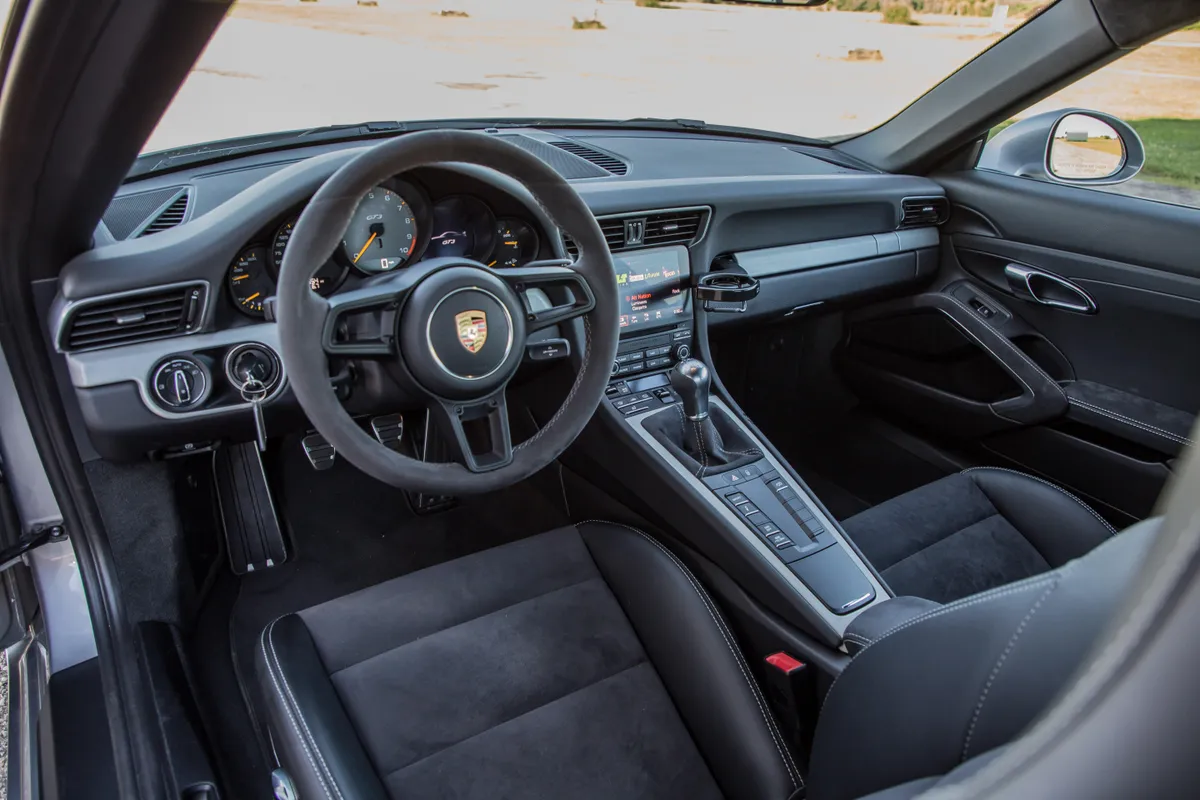
Photo by CNET
With the 991.2 GT3, Porsche added a new front spoiler and back wing to improve how the car moves through the air, boosting downforce by 20%. They also updated the car’s style, changing the front look and adding new taillights at the back, giving the GT3 a newer and cooler look.
Inside the 991.2 GT3, Porsche made some updates, adding a new steering wheel inspired by the 918 Spyder and the latest version of Porsche Communication Management (PCM), which features a touchscreen and better options for connecting your devices.

Photo by RPM Technik
Making it better to handle and smoother to drive, the 991.2 GT3 got a new chassis setup, which included a big improvement – rear-wheel steering. This was a big step up from the 991.1 GT3, as it made the car easier to steer and more stable, especially when going fast around corners or changing lanes, giving drivers a better feel and more control.
Base price started at $146,000 ($14,000 more than the 991.1 GT3).
2019 Porsche GT3
In 2019, Porsche introduced the manual-only 991.2 GT3 Touring. This variant opted for a more subtle look compared to the standard GT3, primarily by removing the rear wing. But retaining full performance capabilities.

Photo by PGM Cars
In the 991.2, the tall carbon rear wing was swapped out for a more subtle spoiler that could be pulled back, similar to what you see on the Carrera GTS. The Touring also had a unique sound due to minor tweaks made to the intake.
For the engine, it still featured the 4.0-liter flat-six motor, pushing out a big 500 hp. This engine is the same one used in the 991.2 GT3. Because this model only came with a manual gearbox, it made it a joy for drivers who like to feel in full control of their car.

Photo by Rennlist
Even with its cool and quiet look, the 991.2 GT3 Touring did not cut back on performance. It’s perfect for those who want a fun, powerful drive without a lot of flash. If you want a car that’s great to drive every day and also has a lot of power under the hood, the GT3 Touring is a top pick.
Base price started at $143,000 ($3,000 less than the regular GT3).
Porsche 991 GT3 Common Problems
The Porsche 991 GT3 is regarded as one of the best sports cars around that is not only reliable but also fun to drive, with a track-ready performance that still manages to offer everyday usability and comfort.
Many people have driven their Porsche GT3 for extended distances, some even exceeding 80,000 miles, proving its reliability.

This breaks the traditional belief that supercars are inherently unreliable.
However, it is essential to keep in mind that all cars, even supercars, can have issues and it is crucial to perform a Pre-Purchase Inspection (PPI) from an authorized dealer or experienced independent mechanic to reveal all issues.
Engine Failure: The early models of the 991.1 GT3 had some engine issues that were serious enough to warrant a recall. The problem was related to the connecting rod fasteners, which could potentially fail and lead to catastrophic engine damage.
Transmission Issues: Some owners have reported issues with the PDK (Porsche Doppelkupplung) automatic transmission, including rough shifting or hesitation. However, these cases seem to be quite rare.
Tire Wear: Given the sporty nature and capabilities of the GT3, tire wear can be high, especially if the car is frequently driven hard or used on the track. This is not necessarily a ‘problem’ but rather a factor in the car’s performance orientation.
Suspension Wear: Like the tires, the suspension components can wear down more quickly due to the car’s performance nature. Again, this is more of a running cost issue rather than a specific defect.
Oil Leaks: Some 991 GT3 owners have reported oil leaks, particularly from the rear main seal and the oil pan.
Electronics: Like many modern cars, the GT3 has its share of electronic systems, and these can sometimes present issues. Some owners have reported problems with items like the radio, navigation system, or other infotainment components.
Recalls
2014 GT3 vehicles
Piston Connecting Rod (Recall no. 14V090000)
A damaged crankcase may allow engine oil to leak onto hot components in the engine bay which may result in a fire.
2019 GT3 vehicles
Air Bags (Recall no.19V179000)
The side airbag impact sensors may not have been properly tightened to the vehicle.
2019 GT3 vehicles
The Child Restraint System (CRS) instructions (Recall no. 19V875000)
The Child Restraint System (CRS) instructions within the Owner’s Manual may not provide enough specificity for proper installation.
Maintenance and Ownership Costs
In comparison to other supercars, the Porsche GT3 is known for its relatively minimal maintenance needs.

However, it is important to remember that regular maintenance and repairs will still be necessary, and the costs can vary depending on whether you take your car to a dealer or an independent mechanic.
Here are the suggested service schedule and intervals per Porsche:
Annual Maintenance or Every 6K Miles:
- Vehicle Inspection
- Change engine oil and filter
- Update or replace maintenance items based on the inspection
- Replace engine air intake filters (GT3)
- Add the following maintenance items to the annual service, based on the time or mileage intervals shown below:
Additional Maintenance Every 12K or 2 years:
-
Replace Spark Plugs
-
Replace brake fluid
-
Replace the cabin pollen filter
-
Replace cabin pre-filter element
-
Replace engine air intake filters
Additional Maintenance Every 24K or 4 Years:
-
Replace drive belt
Additional Maintenance Every 48K or 6 years:
-
Replace PDK clutch fluid
-
Clean throttle body
Additional Maintenance Every 96K or 12 years:
-
Replace manual transmission fluid
-
Replace PDK transmission oil
Here is a rough estimate of typical service costs associated with the Porsche GT3:
Oil Change – As low as $300 for independent mechanics and $480 for dealers.
Minor Service – Typically includes oil change, cabin filters, and engine filters. The cost from a dealer is around $1,500
Major Service – Typically includes all the above plus spark plugs, brake flush, trans flush, expect about $2,500 from a dealer.
Tires – A set of high-performance tires like Michelin PS4 will cost about $2,000.
Brakes – Rotors are carbon ceramic which should last forever. Aftermarket brake pads that are OE equivalent will cost about $800 for a full set. Steel breaks would cost about $6,000 to replace.
Clutch – Dual clutch transmission should last the lifetime of the car so expect zero additional expenses for clutch or flywheel service.
Options List
Porsche has made a name for itself with its broad range of personalized features to pick from. In this section, we will spotlight some of the top preferences for customization that GT3 owners often opt for.
One much-liked add-on is the Sport Chrono Package, featuring integrated timers and the handy Porsche Track Precision smartphone app.
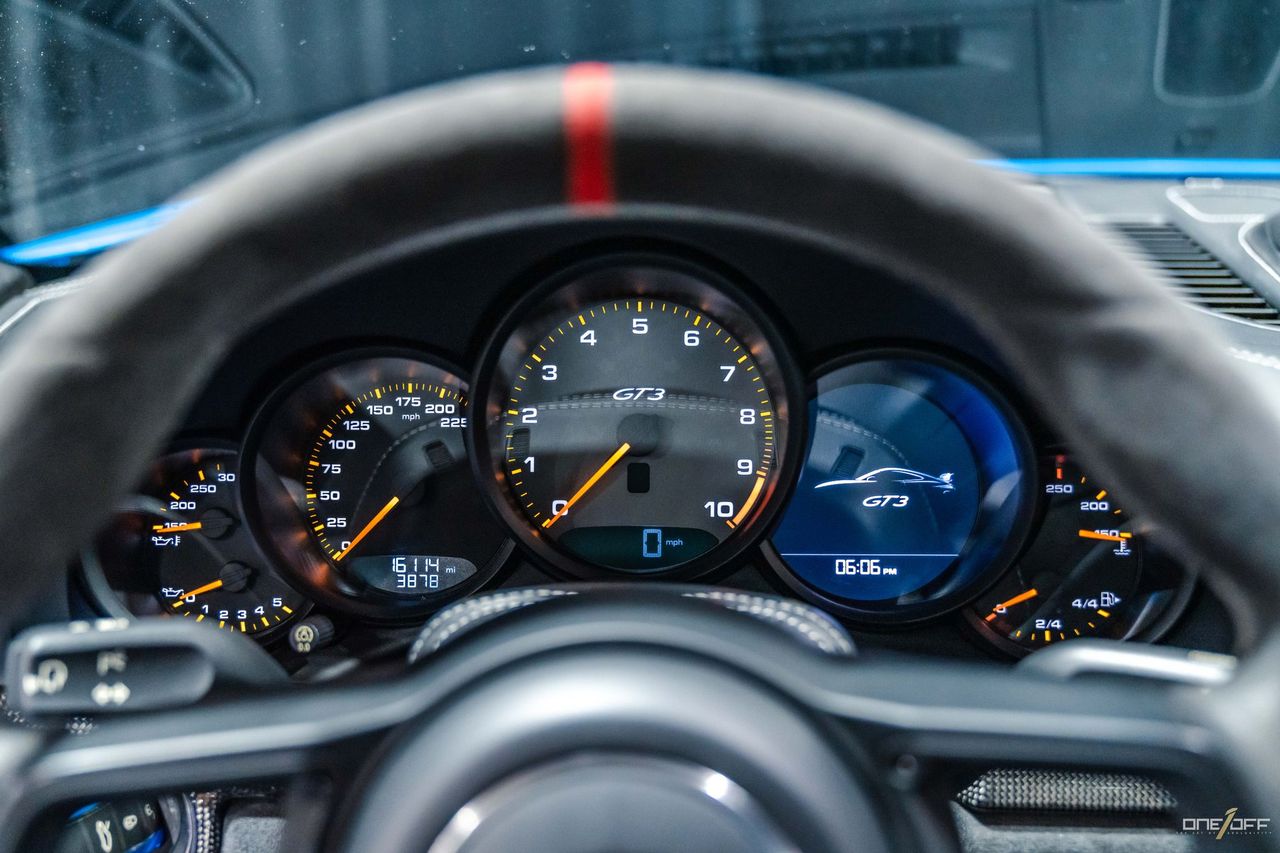
Using GPS, this app captures lap times and assorted driving metrics, such as speed, lateral movement, and changes in acceleration. It neatly organizes this data, facilitating drivers in exchanging and comparing their stats with fellow drivers.
Another preferred pick is the Porsche Ceramic Composite Brake (PCCB), particularly attractive for those who frequently experience their cars on the track.
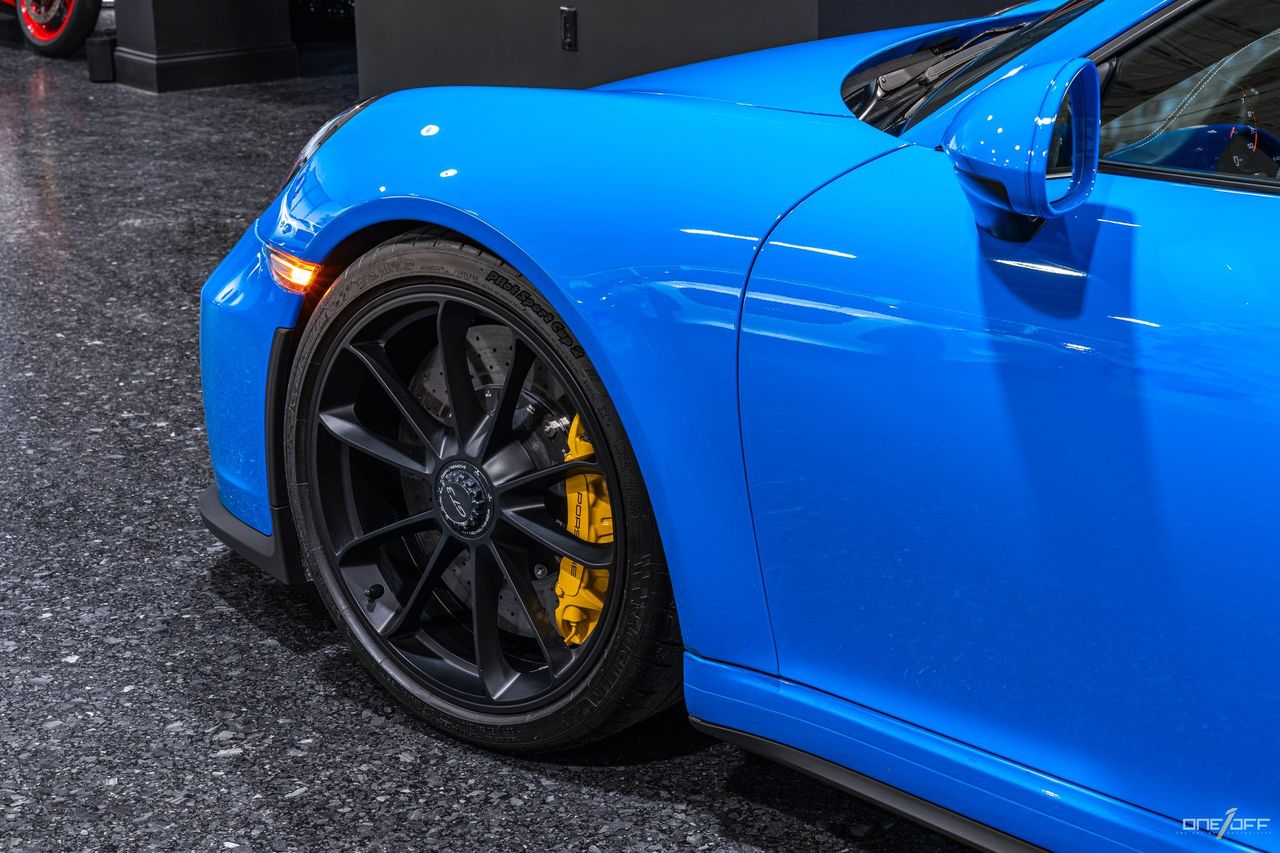
These ceramic brakes are easily spotted by their distinctive yellow calipers, contrasting with the red calipers of standard steel brakes. This option proves especially beneficial for GT3 owners who take their cars to track day outings.
Several owners chose to skip the standard sport bucket seats in the GT3, leaning towards more cushioned and comfy seats. Porsche offered this different seat option at zero additional cost, making it an enticing pick for those desiring a mellower-driving feel. Still, this choice doesn’t boost the car’s resale value since many enthusiasts have a preference for sport bucket seats.
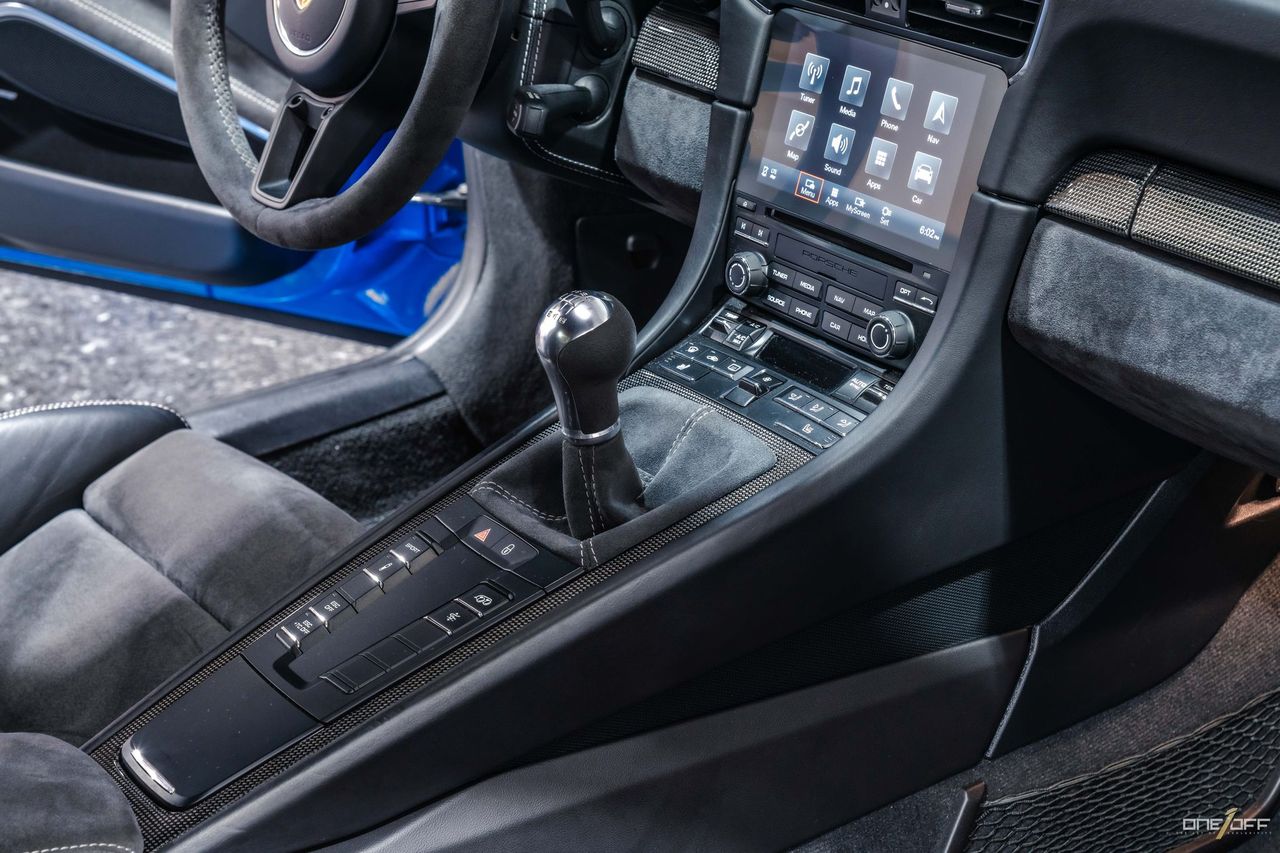
Also, a handful of GT3 customers also went through the PTS (Porsche to Sample) program which was a factory-in-house customization program, that allowed customers to personalize their Porsche with a unique exterior.

Photo by Rennlist
For individual unique interior colors, materials, and features that were not available on regular production models, you would have to go through the Porsche Exclusive Manufaktur department.
Because of the strict approval requirements, cars that went through the PTS and Porsche Exclusive Manufaktur program are considered highly desirable.

These cars usually command a higher premium in the market due to their exclusivity and uniqueness.
Here are some examples of option changes
2014 Porsche GT3
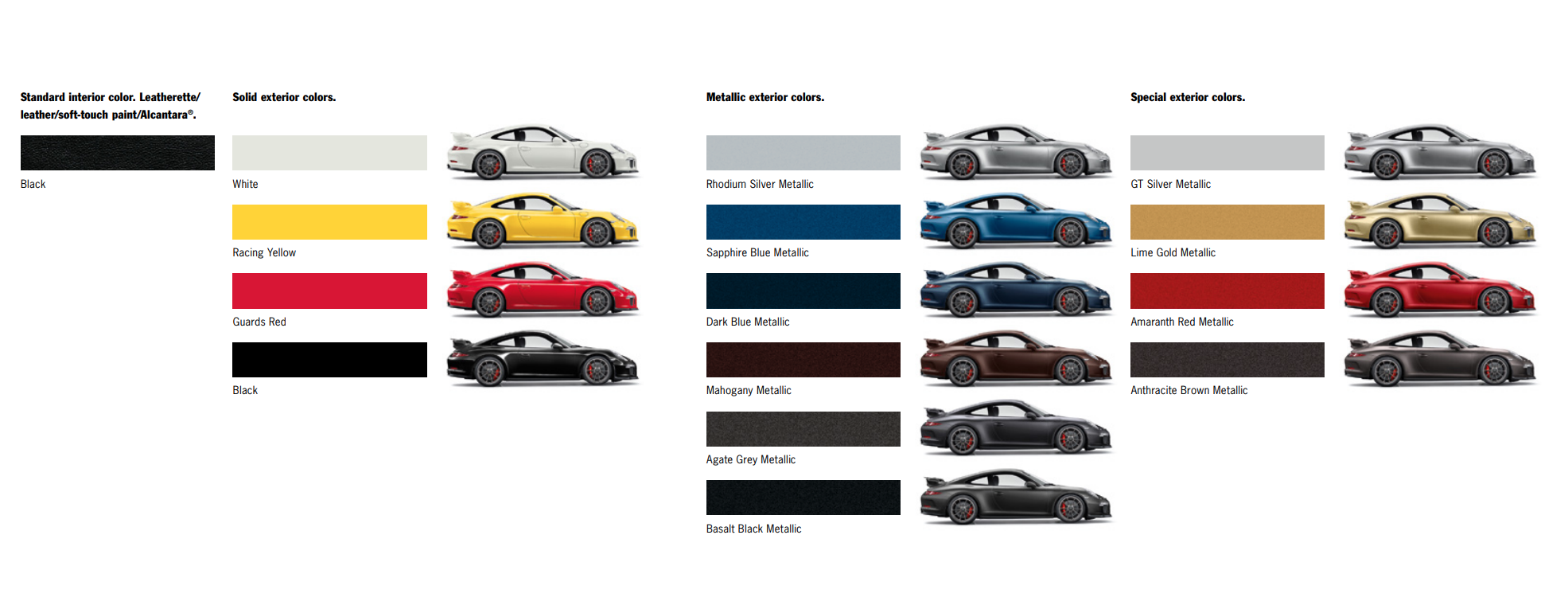
2016 Porsche 911 R
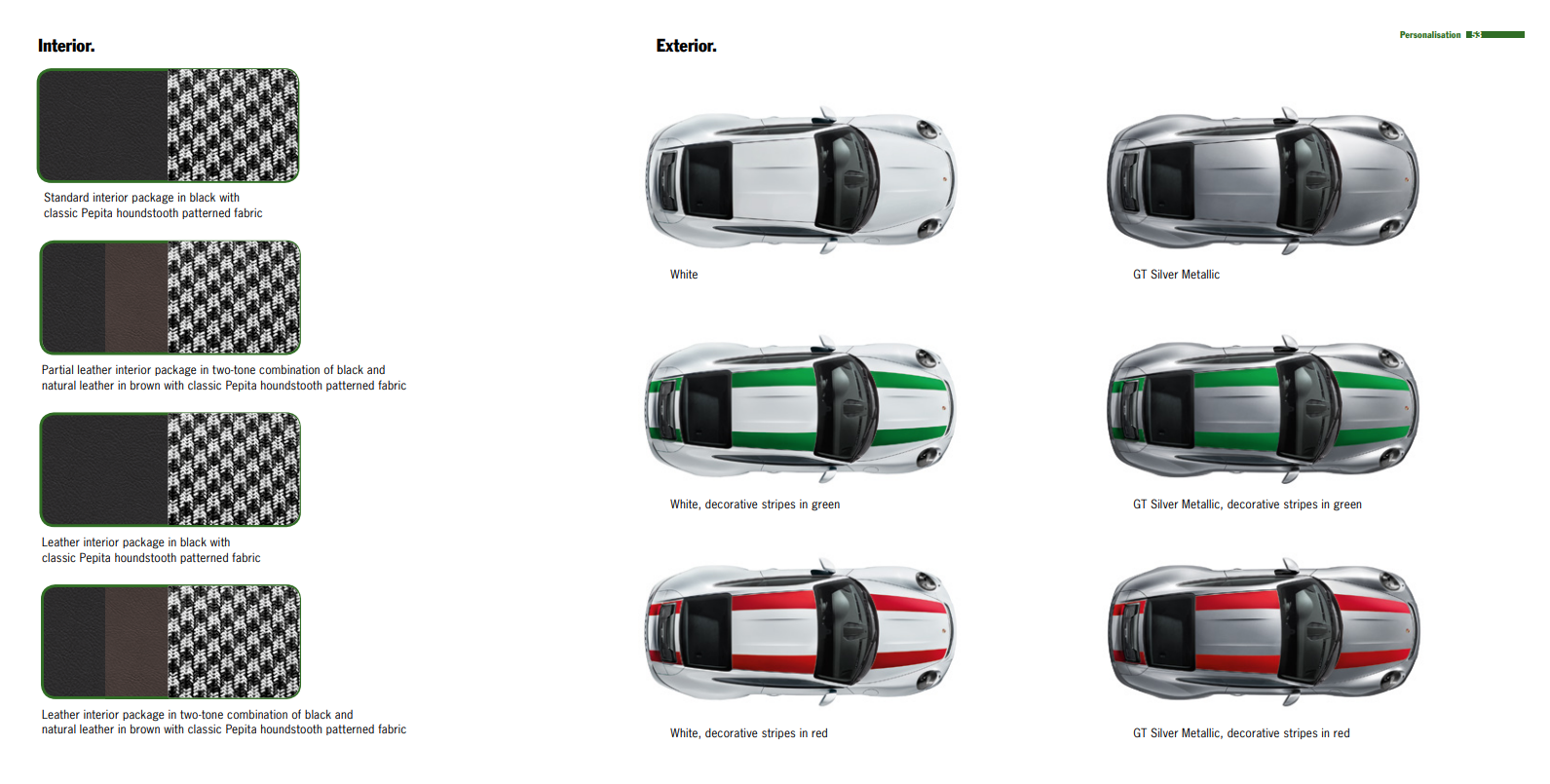
Key Options
-
Front-axle lift
-
Sport bucket seats
-
Carbon-ceramic brakes
-
Sport Chrono Pack
-
Manual (991.2 GT3)
-
PTS and Porsche Exclusive Manufaktur interior
Porsche 991 GT3 Price and Values (991 manual, 991 Touring and 911 R)
The Best Porsche GT3 To Buy
When it comes to buying a GT3, there are a few key factors to consider that can affect the car’s long-term value.

Some of the criteria break down into 3 key points.
Without a doubt, the limited edition 911 R is the most desirable, simply due to the fact that it is very limited and sought after by many collectors. Right after it was released, the 911 R was trading for over double its MSRP value.

Photo by Bring a Trailer
While the prices are now holding steady, it is a car that will not decrease in value but will continue to hold and increase in value in the coming years.
Meanwhile, the GT3 Touring that later debuted in the 991.2 generation adopted some elements from the 911 R’s playbook. However, it wasn’t a limited edition and instead became a popular option for those seeking high performance with a slightly more discreet profile.

Photo by Elferspot
It is one that is a good buy that will be desirable for appreciation, as it is considered to be a pure 911 GT3 for the gentleman.
For those looking to get into a GT3, the facelift 991.2 GT3 would be a good choice. It arrived with substantial improvements, offering more power, and a more engaging driving experience, and the much-desired manual transmission option, bringing it closer to an everyday track car.

Still, all versions of the GT3, starting with the first models before the facelift, are great buys due to how well they’re made and how reliable they are. These cars show off Porsche’s top-notch dependability, with only a few big issues ever reported.
Plus, NA cars, which are harder to find these days, will always have a special charm. There’s just something about NA cars that will keep people interested.
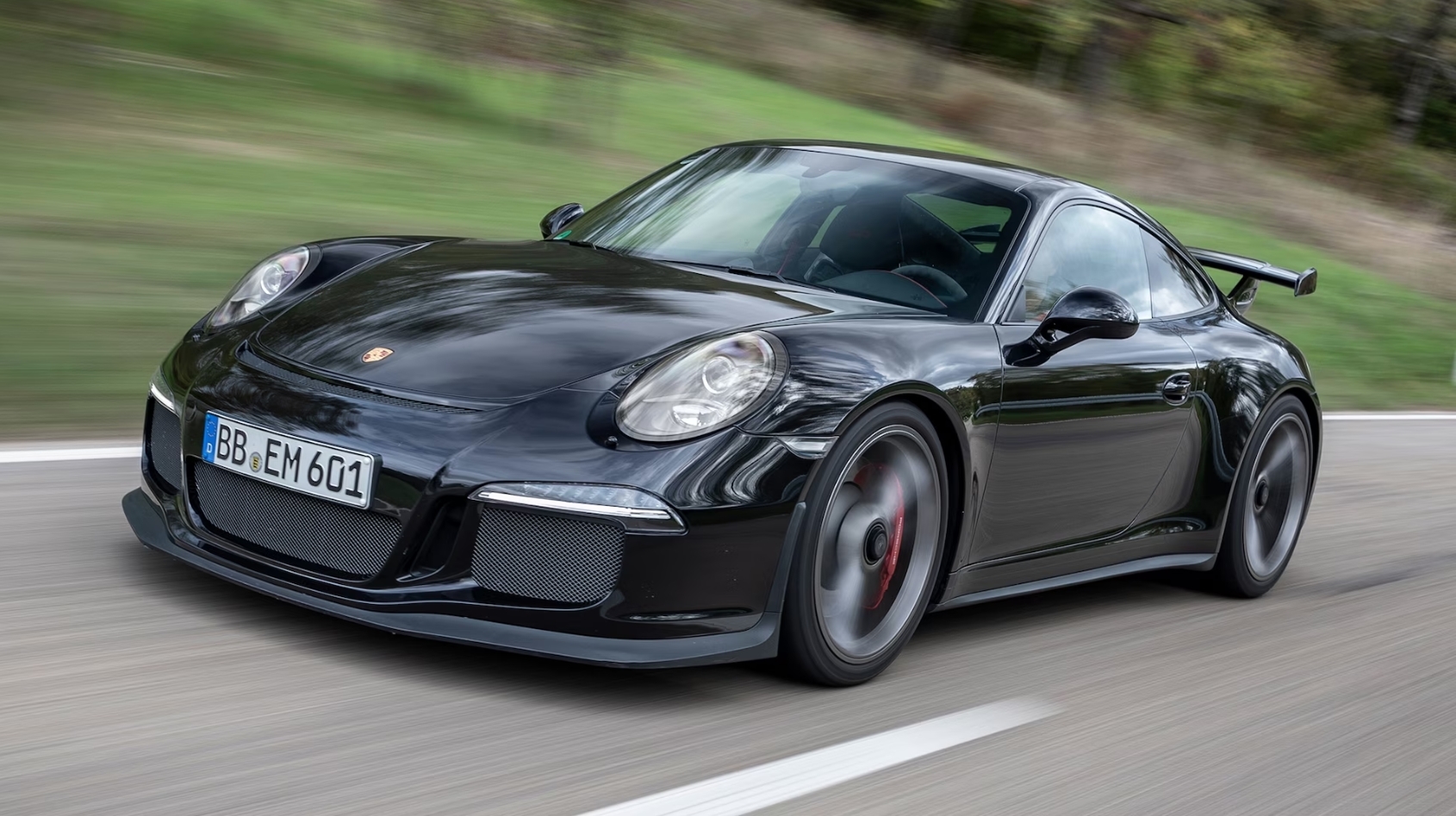
Photo by Motor Trend
With more cars today moving towards hybrid and electric tech, fans and collectors are hunting down cars with naturally aspirated engines even more. They’re becoming quite the hot item in today’s car world.
In addition, the condition and mileage of the car are also important factors to consider when buying a GT3. There are many that have been driven hard on the track.

Photo by Pistonheads
But the ones that are more likely to retain their value in the long run and will fetch the most money will be a well-maintained cars with low mileage.
Therefore, it’s important to do your research, compare prices, and look for well-maintained cars if you are considering purchasing a GT3 with the goal of not losing any money.
Conclusion
In conclusion, for around ($160,000+) the 991 Porsche GT3 RS is a great choice for a track-focused sports car that you can rely on.

Photo by Car and Driver
While there are other cars in the segment of the 991 GT3, such as the Mercedes-AMG GT R, Audi R8 V10, and the McLaren 570S, none come close to the years of evolution and improvements made to the GT3 that make it a perfect everyday sports car that you can drive home after going to the race track.
The time is now to buy one of these before they start going up in price.
Car Hacking Shortcuts
-
Make sure the car has a front lift system.
-
Spec matters: Look for any PTS exterior color and Porsche Exclusive Manufaktur interior.
-
Sport Chrono package
-
Manual transmission on 991.2
-
Look for well-maintained, low miles GT3
Resources
- 2014 Porsche 991 GT3 Ordering Guide PDF
- 2016 Porsche 911 R Ordering Guide PDF
The post Porsche 991 GT3 Buyers Guide first appeared on Exotic Car Hacks.
The post Porsche 991 GT3 Buyers Guide appeared first on Exotic Car Hacks.

